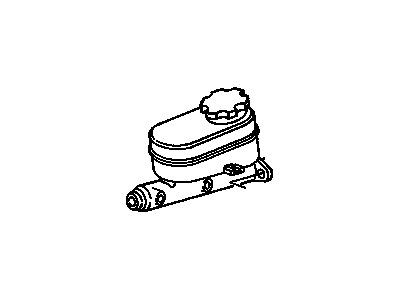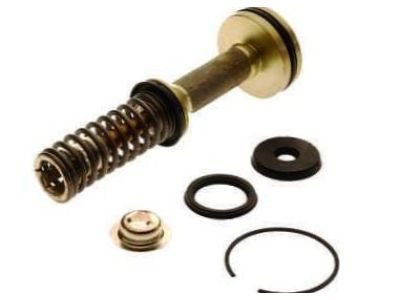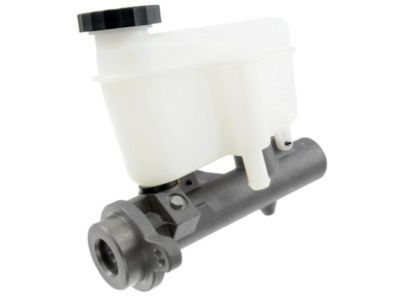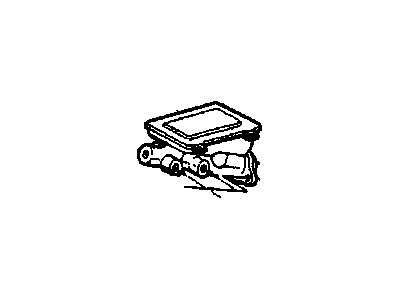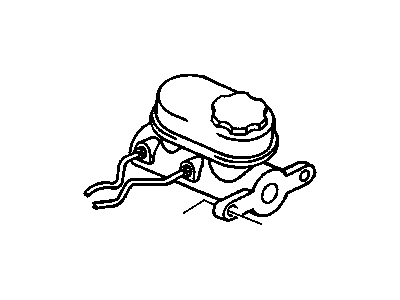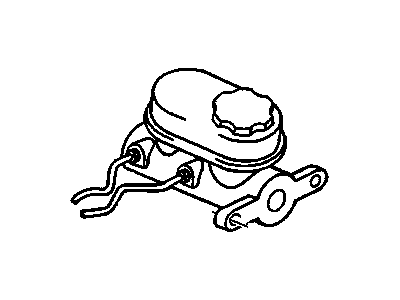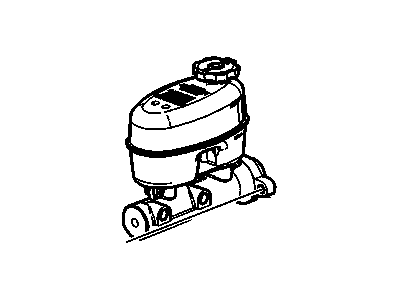My Garage
My Account
Cart
Genuine Cadillac Deville Brake Master Cylinder
- Select Vehicle by Model
- Select Vehicle by VIN
Select Vehicle by Model
orMake
Model
Year
Select Vehicle by VIN
For the most accurate results, select vehicle by your VIN (Vehicle Identification Number).
17 Brake Master Cylinders found
Cadillac Deville Cylinder Asm,Brake Master
Part Number: 18060068$103.61 MSRP: $322.48You Save: $218.87 (68%)
Cadillac Deville Brake Master Cylinder
The Brake Master Cylinder in Cadillac DeVille automotive product is a critical subassembly that directly changes the foot force to hydraulic pressure to operate the slave cylinders for braking. This system operates with the pistons to pump up the fluid for calipers or drum brakes to enable the halting of wheel. Cadillac DeVille vehicles have been using dual circuit master cylinders since 1967 with the ability to even if hydraulic pressure is lost in one circuit, enough pressure to stop the vehicle is still available. Proper maintenance to avoid leakage, corrosion, and internal troubles to the Brake Master Cylinder and other braking systems will significantly drop.
Each OEM Cadillac Deville Brake Master Cylinder we offer is competitively priced and comes with the assurance of the manufacturer's warranty for the part. Furthermore, we guarantee the speedy delivery of your orders right to your doorstep. Our hassle-free return policy is also in place for your peace of mind.
Cadillac Deville Brake Master Cylinder Parts Questions & Experts Answers
- Q: How do I remove and install a master cylinder on Cadillac DeVille?A: To remove the brake master cylinder, start by locating it in the engine compartment on the left side. If necessary, remove the air filler housing that may obstruct its removal. Use a syringe or turkey baster to remove as much fluid as possible from the reservoir. Disconnect the cable from the negative battery terminal and unplug the fluid level sensor switch connector. Place rags under the line fittings and prepare caps or plastic bags to cover the ends of the lines once they're disconnected. Loosen the fittings at the ends of the Brake Lines using a flare-nut wrench to prevent rounding off the flats on the fittings. Pull the brake lines away from the brake master cylinder and plug the ends to prevent contamination. Finally, remove the two mounting nuts and detach the brake master cylinder from the vehicle. For installation, bench bleed the new brake master cylinder before installing it. Mount the brake master cylinder in a vise and attach a pair of brake master cylinder bleeder tubes to the outlet ports. Fill the reservoir with the recommended brake fluid and slowly push the pistons into the brake master cylinder using a large Phillips screwdriver to expel air from the pressure chambers into the reservoir. Repeat this procedure until no more air bubbles are present. Remove the bleed tubes one at a time and install plugs in the open ports to prevent fluid leakage and air from entering. Install the reservoir cap. Then, install the brake master cylinder over the studs on the power Brake Booster and tighten the attaching nuts finger tight. Thread the brake line fittings into the brake master cylinder, ensuring not to strip the threads. Tighten the mounting nuts securely, followed by the brake line fittings. Fill the brake master cylinder reservoir with fluid and bleed the brake master cylinder and the brake system. To bleed the brake master cylinder on the vehicle, have an assistant depress the brake pedal and hold it to the floor while loosening the fitting nut to allow air and fluid to escape. Repeat this procedure on both fittings at the brake master cylinder until the fluid is clear of air bubbles. Finally, test the operation of the brake system carefully before placing the vehicle into normal service.
Related Cadillac Deville Parts
Browse by Year
2005 Brake Master Cylinder 2004 Brake Master Cylinder 2003 Brake Master Cylinder 2002 Brake Master Cylinder 2001 Brake Master Cylinder 2000 Brake Master Cylinder 1999 Brake Master Cylinder 1998 Brake Master Cylinder 1997 Brake Master Cylinder 1996 Brake Master Cylinder 1995 Brake Master Cylinder 1994 Brake Master Cylinder 1993 Brake Master Cylinder 1992 Brake Master Cylinder 1991 Brake Master Cylinder 1990 Brake Master Cylinder 1989 Brake Master Cylinder 1988 Brake Master Cylinder 1987 Brake Master Cylinder 1986 Brake Master Cylinder 1985 Brake Master Cylinder 1984 Brake Master Cylinder 1983 Brake Master Cylinder 1982 Brake Master Cylinder

